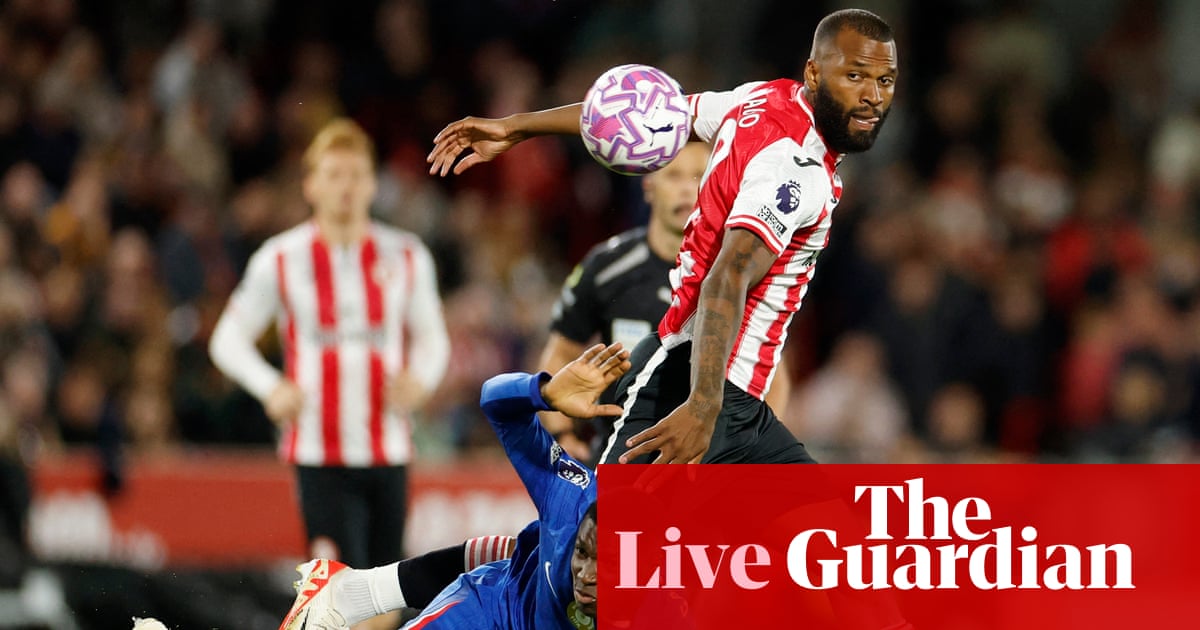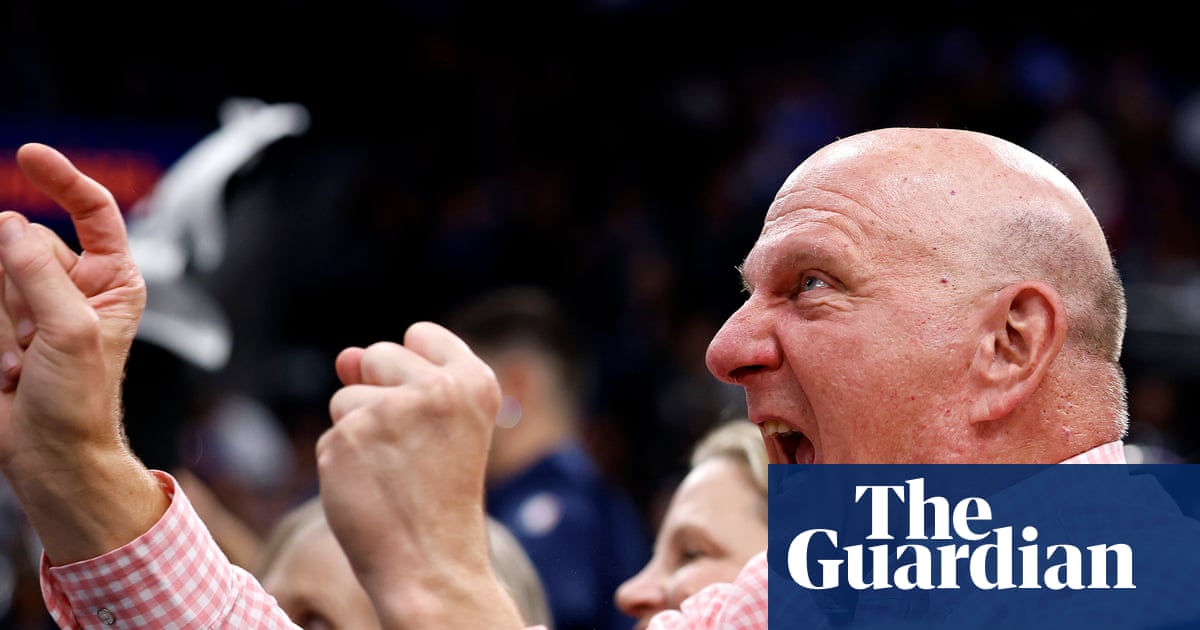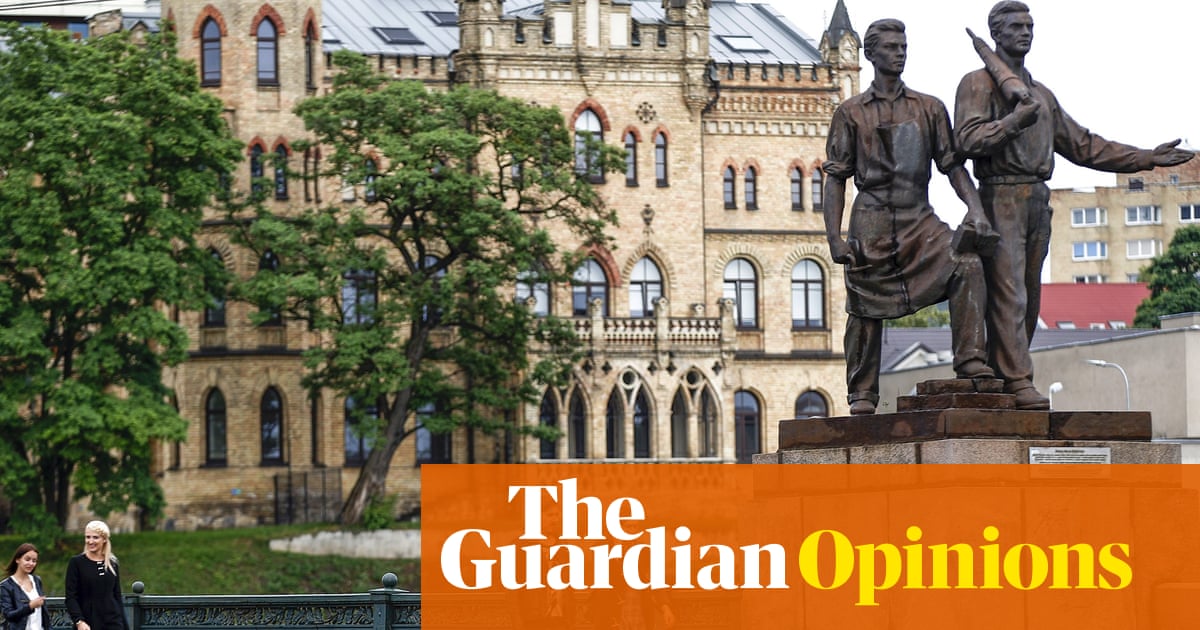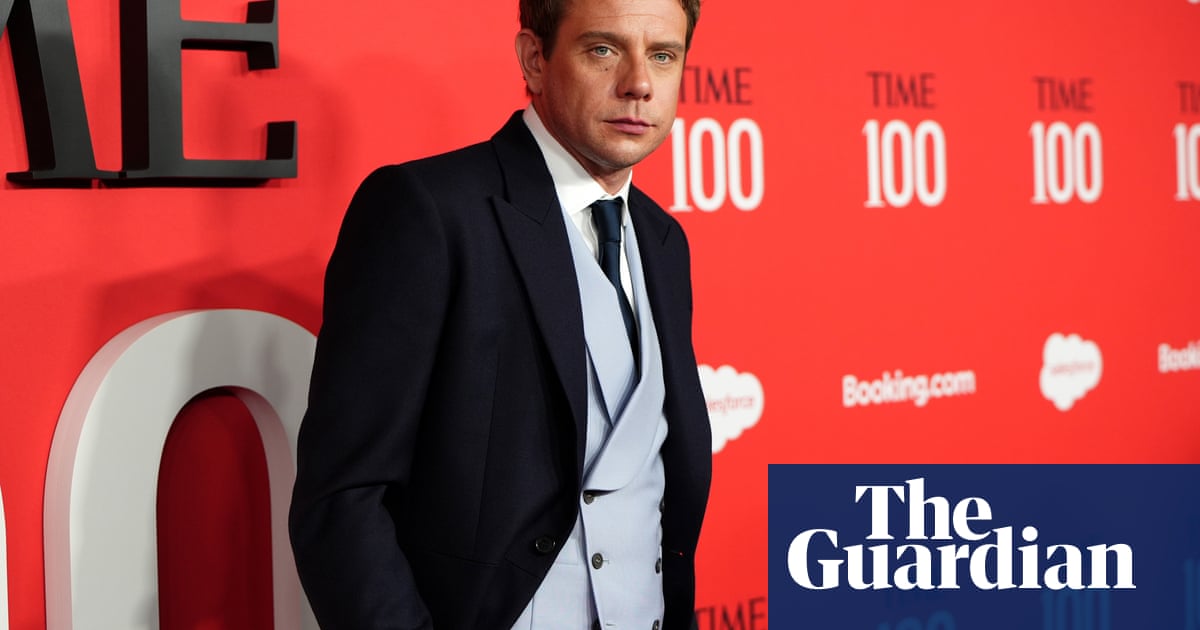As Los Angeles county’s new $720m art museum building nears completion, it’s still haunted by a single, vexing question: how do you hang art in a gallery where every single wall is made of massive slabs of concrete?
Designed by Peter Zumthor, a prizewinning Swiss architect, the new building at the Los Angeles County Museum of Art (Lacma) has sparked controversy in the art world since its initial designs were made public in 2013.
The monolithic concrete structure, which has been compared with a freeway overpass and an “amoebic pancake”, was built to replace four older Lacma buildings, which were torn down to make room for the stylish newcomer. The building will hold a rotating selection from Lacma’s permanent collection of more than 150,000 art objects from around the globe.
The creation of the new gallery space has been marked by unusual drama and contention. One of Lacma’s major donors publicly broke with the museum as a result of conflict over how the permanent collection would be displayed. The construction site, which borders the LaBrea Tar Pits, is famous for the ancient fossils preserved in bubbling tar. Building a gigantic concrete building on tar-filled land in an earthquake-prone region caused additional costs and delays: thirteen sabre tooth tiger skulls were uncovered during construction.
As the estimated cost of the project rose by nearly $100m, Zumthor, the star architect, publicly distanced himself from the results, saying he had repeatedly been forced to “reduce” his design, and that the experience had convinced him to never again work in the US.
The building, which was initially conceived as an all-black structure evoking a tar pit or an oil spill, will now remain the raw gray of unadorned concrete.
On Thursday, Lacma’s CEO, Michael Govan, who has championed the divisive project for nearly two decades, gave an early tour of the new space to a group of journalists, including some who have publicly criticized the building’s design. The building, named the David Geffen Galleries after its largest donor, will officially open in 2026.

Outside, the structure resembles a gleaming dinosaur egg on squat concrete legs, with a long tail of a gallery that curves over Wilshire Boulevard, allowing visitors to enter on both sides of the street. Inside, the building is all hulking concrete surfaces and curving walls of windows that let in the southern California sun – a striking but controversial choice for a museum, since paintings and drawings are typically kept out of direct sunlight.
Govan defended the wraparound windows as essential for giving the museum a sense of place; he wanted visitors to “know you’re in Los Angeles – these collections are in Los Angeles”.
The CEO led a crowd of journalists into one of the gallery’s multiple entrances, which is at the top of a daunting flight of concrete steps. The museum CEO loves stairs, he explained: the only exercise he gets is climbing Lacma building stairs and pacing while talking on the phone.
As Govan walked the journalists through the sinuous galleries, he was energetic, full of quotations and anecdotes about Zumthor, his star architect. Zumthor was not there.
Govan noted that the sleek leather benches in the sunlit galleries were only there as temporary place-holders: Zumthor had requested red-brown leather benches stuffed with duck feathers, which had yet to be installed.
When asked to respond to the many criticisms of the project, the CEO was defensive. The “whole idea” of the space “was a new idea, right, so you can’t – no one’s ever experienced this before”, he said. “That is the spirit of experimentation. That proof will be in the final results – of whether it works, and how the public responds to it.”
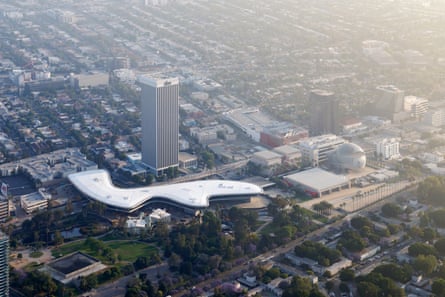
Opposition to Zumthor’s evolving design had been fierce. Some of the most dedicated critics of “the blob” hated it so much they held an alternative design competition and bought full-page newspaper ads in protest.
But to Govan, his building is not just a new gallery: it’s a fundamentally new way of experiencing art, an attempt “to reinvent art history for the 21st century”.
The space was designed to be “non-hierarchical”, Govan said. He did not want to organize the museum’s permanent collection by time period or geography or type of art: he recalled telling Zumthor that “I don’t want anyone in the front.”
In practice, this means that all of the gallery space is on a single floor, and the layout of the rooms is unpredictable and confusing to navigate.
“The building itself really avoids linear histories or linear paths,” Govan said. “The remit was to make something that was more like wandering in a park, where you curate your own journey.” When the gallery opens in 2026, Govan said, the first show will be organized around the “muse” of four different oceans, including a mix of Mediterranean art, and a Pacific collection that brings together California artists with those from Japan.
Zumthor and Govan’s vision has its prominent defenders. Brad Pitt showed up to a public meeting in 2019 to praise Zumthor’s “mastery of light and shadow”, and spoke in favor of the new Lacma building for so long that an elected official told him to “wrap it up”. Architectural Digest, in a preview piece in June, hailed the new building’s “curatorial provocations and challenges to the shibboleths of the art world”.
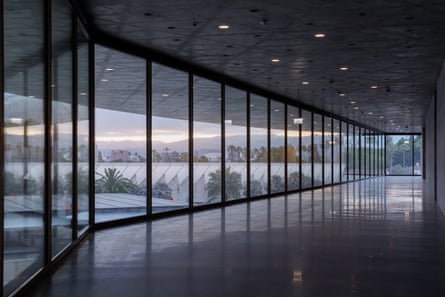
But while the journalists on Friday’s preview tour were polite, their questions made clear that the criticisms of Lacma’s new building were not going away.
The practicality of the concrete walls has remained front and center in the debates, including in a series of eviscerating columns by Los Angeles Times’ art critic Christopher Knight, who won a 2020 Pulitzer prize for his critiques of a building plan funded in part by $125m in taxpayer dollars.
“How do you hang paintings on concrete walls?” Knight asked in 2019, calling the idea “nutty”. He nicknamed Zumthor’s building “the Incredible Shrinking Museum”, noting that the amount of planned gallery space in the new structure had shrunk throughout the planning process, resulting in a smaller amount of total display space than in the razed buildings it replaced.
Asked again on Friday about how curators would hang art on the minimalist concrete, Govan was breezy: “You can just drill right into the walls,” he said. “It’s very sturdy–you can hang Assyrian relief.”
When they needed to change the exhibit, Govan said, they would simply fill up those holes and drill new ones. He noted that there were several patches on the walls already.
Someone asked if constantly drilling and patching the walls would destroy the beautiful minimalist surface of the concrete.
“It’s supposed to be like a good pair of old blue jeans that gets better with time,” the CEO said. And he believed in the new gallery’s longevity. Earlier, he had said, buoyantly, “This building could last 500 years.”

 2 months ago
36
2 months ago
36







